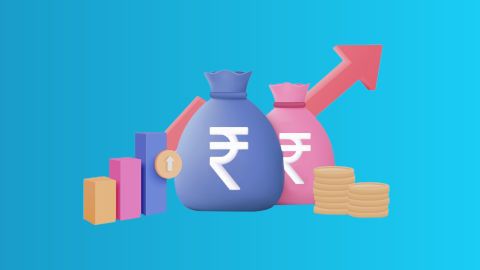How does GST work?
Goods and Services Tax (GST) is a comprehensive tax levied on the supply of goods and services across India. It follows a dual structure where both the central and state governments collect taxes concurrently. To understand the GST state code list for identifying the applicable tax rates for different states, businesses can refer to official resources. The system subsumes a range of indirect taxes such as excise duty, service tax, and value-added tax (VAT).
GST is divided into three categories: CGST (Central GST), SGST (State GST), and IGST (Integrated GST). CGST and SGST apply to intra-state transactions, while IGST is charged on inter-state transactions. The seamless flow of input tax credit across states enhances transparency and minimises cascading effects of taxation, ensuring efficiency in the taxation process. This unified tax regime simplifies tax compliance and reduces the overall tax burden for businesses, leading to a more transparent and business-friendly environment. Additionally, GST facilitates a simplified tax structure, allowing businesses to focus more on growth.
How did indirect taxes functioned earlier?
- Multiple taxes: Before GST, businesses dealt with multiple indirect taxes like excise duty, VAT, and service tax.
- Cascading effect: Taxes were levied on both goods and services at every stage of the supply chain, creating a tax-on-tax effect.
- No uniformity: Different states applied different value added tax rates, leading to complexity in tax calculations.
- Tax credits: Taxpayers could not claim input tax credits for taxes paid across state boundaries, increasing costs.
- Complicated compliance: Businesses had to follow different rules and regulations depending on the state they operated in, making compliance difficult.
- Limited digital integration: Tax processes were not fully integrated online, making it challenging for businesses to track payments and filings.
Before GST, businesses faced challenges due to multiple indirect taxes like excise duty, VAT, and service tax. To streamline compliance, businesses must understand the documents required for GST registration to avoid delays during the registration process.
How will GST transform the present indirect structure?
The introduction of GST simplifies tax compliance and improves transparency in business operations. For example, individuals can now register for GST online seamlessly, reducing complexities and improving operational efficiency.
- Simplified tax structure: GST eliminates the complexity of various taxes by combining them into a single tax framework.
- Transparency: With the reduction in hidden taxes and clear tax credits, GST increases transparency in transactions.
- Uniform tax rates: GST introduces uniformity in tax rates across the country, eliminating discrepancies between states.
- Digital compliance: GST integrates tax processes online, making compliance easier and more efficient for businesses.
- Reduced tax burden: The seamless availability of input tax credits reduces the overall tax burden on businesses.
- Ease of doing business: A uniform taxation policy will reduce trade barriers between states, fostering growth and expansion opportunities for businesses.
- Revenue generation: GST encourages higher compliance, resulting in better revenue generation for the government.
How is GST charged in India?
- Dual GST model: India follows a dual GST model, where both the central and state governments levy taxes simultaneously on intra-state supplies.
- CGST and SGST: For intra-state transactions, CGST is collected by the central government, and SGST is collected by the respective state government.
- IGST for inter-state transactions: In the case of inter-state transactions, IGST is charged, which is then divided between the central and state governments.
- Exemptions: Certain essential goods and services, such as healthcare and education, are exempted from GST.
- GST rates: GST rates vary based on the nature of goods and services, with different slabs including 5%, 12%, 18%, and 28%.
- Threshold limit: Businesses with a turnover below Rs. 20 lakh (Rs. 10 lakh for some states) are exempt from GST registration.
GST rates vary based on the type of goods and services, and understanding these rates is essential, especially for high-value items like cars. Learn about the applicable GST on cars to make informed decisions while purchasing vehicles. You can also use a reliable GST Calculator to estimate the tax amount on your transactions more accurately.
Example of how GST will work
- Manufacturer to wholesaler: A manufacturer supplies goods to a wholesaler at a cost of Rs. 1,00,000 and applies 18% GST, i.e., Rs. 18,000. The wholesaler pays Rs. 1,18,000.
- Wholesaler to retailer: The wholesaler sells the goods to a retailer at Rs. 1,50,000. They apply an 18% GST, i.e., Rs. 27,000. The retailer pays Rs. 1,77,000.
- Input tax credit: The wholesaler can claim Rs. 18,000 as an input tax credit for the GST already paid to the manufacturer.
- Retailer to consumer: The retailer sells the goods to the consumer at Rs. 2,00,000 and charges 18% GST, i.e., Rs. 36,000.
- Final impact: The retailer claims Rs. 27,000 as an input tax credit and remits Rs. 9,000 to the government. The consumer ultimately bears the cost of GST.
Conclusion
GST simplifies India’s tax structure, replacing complex indirect taxes with a single tax. It streamlines compliance, improves transparency, and boosts business growth by reducing tax burdens. Businesses can also benefit from financial options like a business loan, ensuring smooth cash flow for tax obligations.




